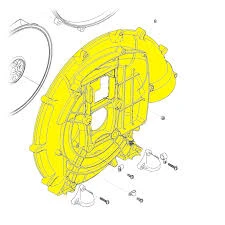Mobile:+86-311-808-126-83
Email:info@ydcastings.com
metal casting price
The Dynamics of Metal Casting Prices
Metal casting, a pivotal process in manufacturing, involves pouring molten metal into a mold to form intricate shapes and designs. This technique is critical in various industries, including automotive, aerospace, and consumer goods. However, the cost of metal casting can significantly fluctuate based on several factors. Understanding these dynamics is essential for businesses to navigate the market efficiently and optimize their production costs.
Factors Influencing Metal Casting Prices
1. Raw Material Costs The primary driver of metal casting prices is the cost of raw materials, which includes metals such as aluminum, iron, and copper. Fluctuations in the global market, affected by supply and demand dynamics, geopolitical tensions, and trade tariffs, can lead to significant price changes. For instance, rising demand for electric vehicles has increased the demand for aluminum, causing prices to soar.
2. Production Volume The scale of production directly impacts the per-unit cost of metal casting. Large-scale production benefits from economies of scale, where the cost per unit decreases as production volume increases. Conversely, smaller production runs might result in higher costs due to fixed overheads that remain constant regardless of the quantity produced.
3. Labor Costs Labor is another essential component influencing casting prices. Skilled labor is necessary for the precision required in metal casting, and wages can vary significantly depending on the region and the skill level required. In areas where labor unions are strong or where the cost of living is high, labor expenses can increase, subsequently raising the overall cost of metal casting.
metal casting price

4. Energy Costs Metal casting is an energy-intensive process. The costs associated with energy, especially in regions with high electricity prices, can considerably affect casting prices. Furthermore, fluctuations in energy markets can lead to unpredictability in production costs, compelling manufacturers to adjust their pricing accordingly.
5. Technology and Equipment Advancements in technology can influence casting prices positively by enhancing efficiency and reducing waste. Companies that invest in modern equipment may lower their operational costs, but the initial investment can be significant. Consequently, those costs may take time to recoup through savings in production.
6. Market Demand The demand for end products made from cast metals also plays a crucial role in pricing. High demand in construction, automotive manufacturing, and other sectors can drive up the prices of casting services. Conversely, during economic downturns, decreased demand can lead to price reductions as manufacturers seek to remain competitive.
7. Quality Requirements The specific requirements for the casting process, including tolerances, surface finishes, and heat treatments, can affect the cost. Higher quality standards typically require more meticulous work and potentially longer production times, driving up expenses.
Conclusion
In conclusion, the price of metal casting is influenced by a complex interplay of factors ranging from raw material costs to market demand. Understanding these variables is vital for manufacturers and businesses involved in the supply chain. By closely monitoring these elements and adapting to changing market conditions, businesses can better manage their operational costs and pricing strategies. Ultimately, a comprehensive grasp of metal casting prices equips manufacturers to make informed decisions that align with their financial and strategic goals. Navigating these dynamics is crucial for staying competitive in the ever-evolving manufacturing landscape.
-
Why Should You Invest in Superior Pump Castings for Your Equipment?NewsJun.09,2025
-
Unlock Performance Potential with Stainless Impellers and Aluminum End CapsNewsJun.09,2025
-
Revolutionize Your Machinery with Superior Cast Iron and Aluminum ComponentsNewsJun.09,2025
-
Revolutionize Fluid Dynamics with Premium Pump ComponentsNewsJun.09,2025
-
Optimizing Industrial Systems with Essential Valve ComponentsNewsJun.09,2025
-
Elevate Grid Efficiency with High-Precision Power CastingsNewsJun.09,2025











